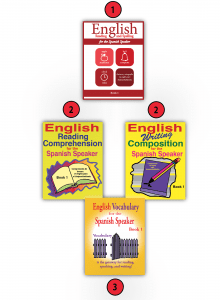English Speech Sounds
Part 2
In last week’s blog, I talked about the English speech sounds made from consonants. The English alphabet has 21 consonants and 5 vowels, a total of 26 letters. In this week’s blog, I will talk about English Speech Sounds and the spelling rules for the short vowle sounds. English Speech Sounds are the sounds that the letters make. It is important students know these sounds quickly so they can read with fluency. When students read with fluency, they can then think about what they’re reading instead of thinking about decoding words.
The five vowel letters make several sounds depending on the spelling in the word. Vowels can make a short sound, a long sound, or another sound. When students first learn to read, they learn the short vowel sounds. In this blog, I will talk about the short vowel sounds. In next week’s blog, I will talk about the long vowel sounds.
Below are the short vowel sounds:
a says /a/ as in cat.
i says /i/ as in sit.
o says /o/ as in hot.
u says /u/ as in cup.
e says /e/ as in pet.
When teaching these short vowel sounds, the short a sound is introduced first then i, o, u, and finally the short e sound. The reason the short e sound is introduced last is because its sound is very similar to the short i sound.
When teaching students to read, I introduce the letter and sound of s first, then the letters m, r, t, and then the short vowel sound for a. After these five letters are introduced and practiced, they can start blending these sounds to read words. For example: mat, rat, sat, ram, am, Sam.
After students have practiced the short vowel sounds and have read many words using these short vowel sounds, I introduce spelling rules that go with the short vowel sounds. Most words will follow these rules. Remember: 80% of the English words follow the sound and spelling expectations.
Below are rules or expectations for spelling words with short vowel sounds.
Double the final f, s, z, or l in short words after a single vowel. For example: huff, pass, buzz, hill, fell, fill.
Use the spelling ck to spell the /k/ sound after a short vowel. For example: snack, stick, lock, black, clock.
Use the spelling tch to spell the /ch/ sound after a short vowel. For example: catch, pitch, notch, clutch, stretch.
Use the letters dge to spell the /j/ sound after a short vowel. Examples: badge, fudge, bridge, lodge, hedge.
By knowing the spelling of the sounds and the rules that go with these sounds, students do not need to memorize the spelling of most individual words. Instead, they can use their knowledge of the alphabetic principle to spell words.
When using Fisher Hill’s English Literacy Program it is important to complete English Reading and Spelling for the Spanish Speaker Book 1 before using English Reading Comprehension for the Spanish Speaker Book 1, English Writing Composition for the Spanish Speaker Book 1 and English Vocabulary for the Spanish Speaker Book 1. After completing English Reading and Spelling for the Spanish Speaker Book 1, then you can use the other Book 1s from the literacy program to practice the skills, sounds and words learned in English Reading and Spelling for the Spanish Speaker Book 1.
In next week’s blog, I will talk about the long vowel sounds.
Visit us on the web at www.Fisher-Hill.com to learn more about our English Literacy Program for Spanish speakers.

